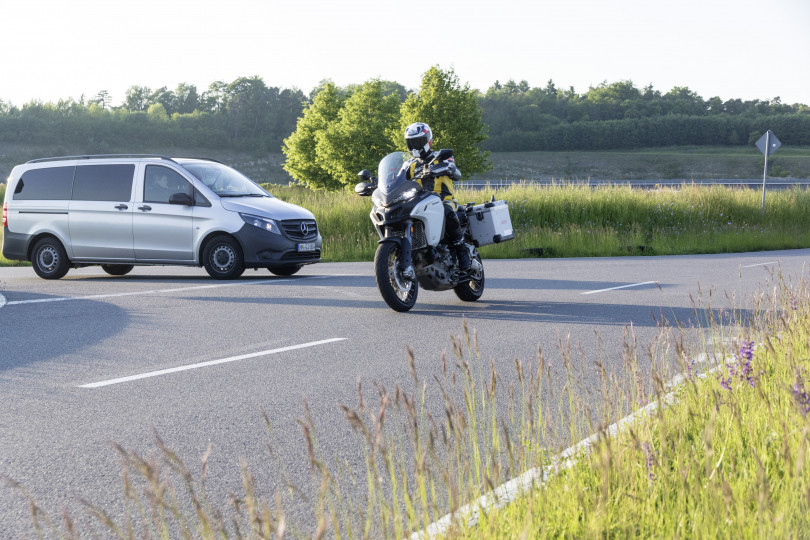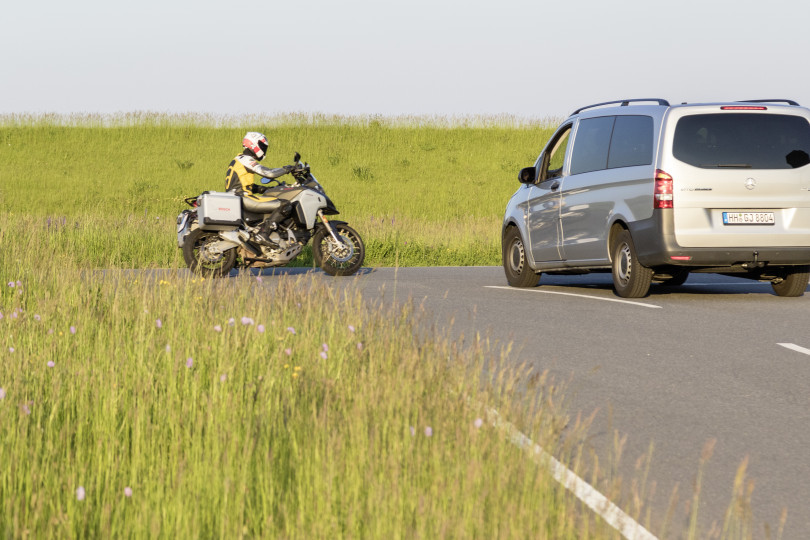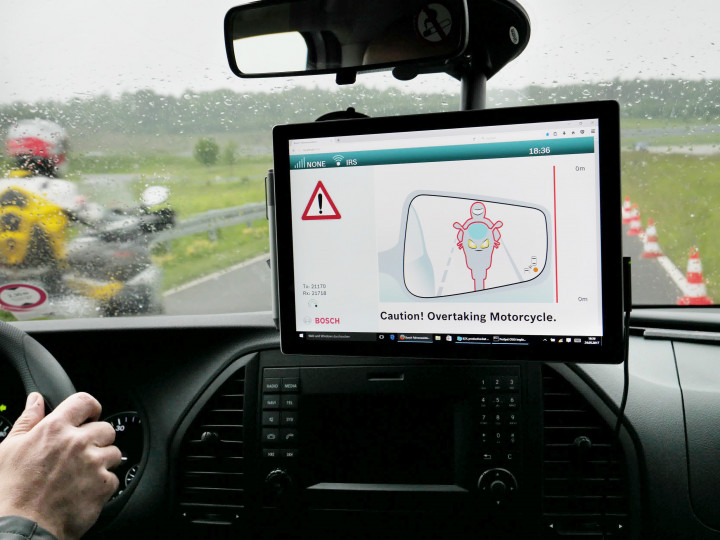Budapest – The first warm days of the year mark the start of motorcycle season – and, unfortunately, a rise in the number of road accidents. Motorcyclists are among the most at-risk road users: 18 times more at risk of being killed in an accident than drivers. Last year, there were approximately 1,316 motorcycle accidents in Hungary alone, 50 of which were fatal. Moreover, in an accident involving more than one vehicle (eg. a car and a motorcycle) 70-75% of the riders are blameless.
One of the main reasons is that riders of two-wheelers are often overlooked in road traffic, both at intersections and during passing. Bosch wants to change that. With its partners, it has developed a prototype smart solution that lets motorcycles and cars talk to each other, creating a digital protection shield for riders. The goal is to prevent dangerous situations from occurring in the first place.
Bosch’s new solution enables the communication between vehicles and motorcycles, creating a „digital defensive shield“ for the riders. With connected innovations designed specifically for riders, Bosch’s laying down the foundations of a safer and more comfortable future for riders, and all traffic participants, all over the world.
Bosch supports safe and connected riding
Through safety systems such as ABS and motorcycle stability control, Bosch has already made riding a two-wheeler significantly safer. By connecting motorcycles, the company is taking safety to the next level. According to estimates by Bosch accident research, motorcycle-to-car-communication could prevent nearly one-third of motorcycle accidents.
Thanks to Bosch’s connected innovations, up to ten times a second, vehicles within a radius of several hundred meters exchange information about vehicle types, speed, position, and direction of travel. Long before drivers or their vehicles’ sensors catch sight of a motorcycle, this technology informs them that a motorcycle is approaching, allowing them to adopt a more defensive driving strategy.
For example, typical dangerous situations arise when a motorcycle approaches a car from behind on a multi-lane road, ends up in a car’s blind spot, or changes lanes to pass. If the system identifies a potentially dangerous situation, it can warn the rider or driver by sounding an alarm and flashing a warning notice on the dashboard. In this way, all road users receive essential information that actively helps avoid accidents.
The public WLAN standard (ITS G5) is used as the basis for the exchange of data between motorcycles and cars. To allow riders and drivers who are farther away to reliably receive the necessary information, the technology makes use of multi-hopping, which forwards the information automatically from vehicle to vehicle.
Mónika Hack
+36 70 510 5516
Mobility Solutions is the largest Bosch Group business sector. In 2016, its sales came to 43.9 billion euros, or 60 percent of total group sales. This makes the Bosch Group one of the leading automotive suppliers. The Mobility Solutions business sector combines the group’s expertise in three mobility domains – automation, electrification, and connectivity – and offers its customers integrated mobility solutions. Its main areas of activity are injection technology and powertrain peripherals for internal-combustion engines, diverse solutions for powertrain electrification, vehicle safety systems, driver-assistance and automated functions, technology for user-friendly infotainment as well as vehicle-to-vehicle and vehicle-to-infrastructure communication, repair-shop concepts, and technology and services for the automotive aftermarket. Bosch is synonymous with important automotive innovations, such as electronic engine management, the ESP anti-skid system, and common-rail diesel technology.
The Bosch Group is a leading global supplier of technology and services. It employs roughly 390,000 associates worldwide (as of December 31, 2016). The company generated sales of 73.1 billion euros in 2016. Its operations are divided into four business sectors: Mobility Solutions, Industrial Technology, Consumer Goods, and Energy and Building Technology. As a leading IoT company, Bosch offers innovative solutions for smart homes, smart cities, connected mobility, and connected manufacturing. It uses its expertise in sensor technology, software, and services, as well as its own IoT cloud, to offer its customers connected, cross-domain solutions from a single source. The Bosch Group’s strategic objective is to deliver innovations for a connected life. Bosch improves quality of life worldwide with products and services that are innovative and spark enthusiasm. In short, Bosch creates technology that is “Invented for life.” The Bosch Group comprises Robert Bosch GmbH and its roughly 440 subsidiaries and regional companies in some 60 countries. Including sales and service partners, Bosch’s global manufacturing and sales network covers nearly every country in the world. The basis for the company’s future growth is its innovative strength. At 120 locations across the globe, Bosch employs some 59,000 associates in research and development.
Additional information is available online at www.bosch.com, www.iot.bosch.com,
www.bosch-press.com, www.twitter.com/BoschPresse, www.bosch.hu









